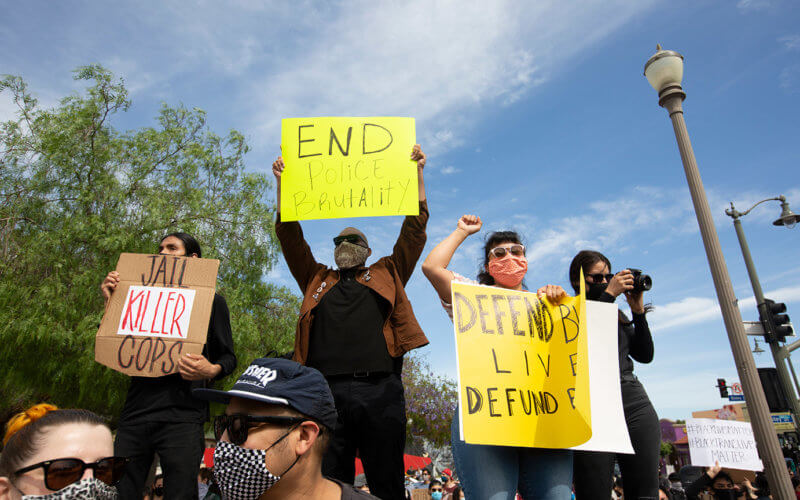
Against the backdrop of an unceasing pandemic, social unrest and a polarized electorate, the 2018 book, “Reality Bites: Rhetoric and the Circulation of Truth Claims in U.S. Political Culture” by Cal State Fullerton faculty member Dana Cloud is perhaps more relevant than ever.
The lecturer in human communication studies researches communication in the context of power and social movements.
What is the book about?
In “Reality Bites,” I talked about power and ideology from people in control — elites in business, media and politics — and the opportunities for talking back to that power effectively.
I was mainly interested in this problem that the powerful control what counts as true in a society. It’s very hard to insert different knowledge or common sense into that. There’s a problem in the post-truth era, where things with no basis in fact are circulating as truth and people believe them.
How do we talk to people with whom we disagree?
Facts alone don’t work because people have bodies and feel emotions. Their consciousness and knowledge are informed and complicated by their personal experiences.
To say that people are ignorant and to mock their conceptions of the world is unproductive. It’s better to explore where those conceptions came from. It can be effective to ask them to tell you a story about their experiences that makes a particular message compelling to them.
Many want to speak truth to power with a lot of facts. But there are other rhetorical strategies — I call them the “Big Five”:
- Emotion — Appealing to feelings rather than logic
- Embodiment — Experiencing truths through or within your body
- Myth — Using origin stories and visions of the future
- Narrative storytelling — Expressing ideas through stories
- Spectacle — Creating something visually or aurally compelling
We’ve seen these being used quite effectively by the conservative media.
In the post-truth era, we need to pay more attention to connecting truth claims to dimensions of experience.
Dana Cloud
How do we change what’s considered truth on a societal level?
It’s about rallying and influencing ordinary people to join together to assert a collective voice. I advocate for employing the “Big Five” to reach people who otherwise wouldn’t be convinced.
The Black Lives Matter movement, for example, has used the emotional narratives of people who had been killed and injured, their families’ stories and the visual spectacle of YouTube videos that document instances of police murder.
This summer, for the first time, it made sense to many that there’s a racism problem in policing. It made sense in a way that didn’t before, because the experiences and voices of people in protest — of Black people in particular — entered into the public consciousness.
What has history taught us about the rhetoric of social movements?
People always rise up and try to alter the arrangements of power in their society to gain liberation and justice. The history of our country is a story of the efforts of social movements, of struggle and contention over the shape of society.
Historically in crises, there are movements for social change and things shift very rapidly. For example, in the early 1950s after Emmett Till was lynched and his body mutilated, his mother decided to have an open casket memorial. With that image and spectacle, people around the world became intensely cognizant of lynching, brutality against Black bodies and the need for civil rights. Public consciousness shifted as a result.
How could the “Big Five” be applied to the pandemic?
Of course, facts are needed — it can be a matter of life or death that we understand facts about COVID-19. But again, it’s not enough to just give the facts. For some, well-educated people like doctors have been elitist and condescending when sharing information with them in the past, and that experience has made them suspicious of intellectuals. For it to really sink in, maybe it is a matter of embodiment: Someone they know is very ill or dying of the virus, or they get it themselves. It’s awful to think about, but illness and disease are kind of like that — when they hit you personally, then that embodied experience will generate a change in consciousness.
In the post-truth era, we need to pay more attention to connecting truth claims to dimensions of experience. It makes our discourse much more powerful: the path to allowing our reality to be considered the truth that counts.
Visit the human communication studies website to learn more about the program at CSUF.